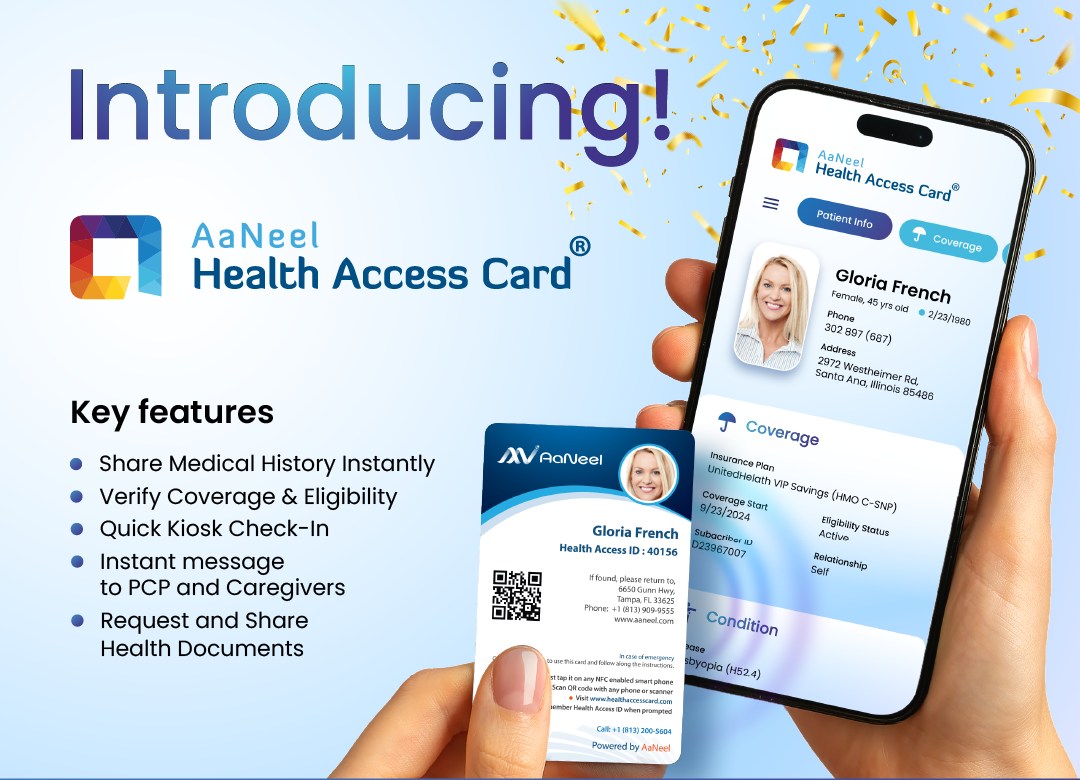CMS Web Interface Sunset

Why Healthcare Still Struggles to Share Data
… and What We’re Doing About It
Let’s be honest: healthcare has a data problem.
Not because there isn’t enough of it—but because we still don’t know how to share it.
Every provider, health plan, and patient generates and touches healthcare data every day—lab results, medication lists, diagnoses, imaging, specialist notes, referrals, and more. Yet far too often, that data sits trapped in fragmented systems, hidden behind firewalls, or simply lost in translation between platforms.
For an industry that’s responsible for nearly a third of the world’s data volume, we’re still remarkably disconnected.
At AaNeel, we believe that’s a solvable problem—but only if we stop treating interoperability like a technical checkbox and start viewing it as a clinical, operational, and strategic necessity.
Let’s talk about what’s really getting in the way—and how we’re helping turn the vision of connected care into a working reality.
It’s Not the Volume. It’s the Fragmentation.
Healthcare data is growing at a staggering rate—estimated to outpace every other sector in the next year. But growth isn’t the issue. The real challenge is fragmentation.
Right now, most healthcare data is spread across countless EHR systems, payer databases, imaging platforms, specialty tools, and paper records. Some of it’s structured. Some of it’s not. Some of it’s coded to standards. A lot of it isn’t.
That’s why clinicians still spend hours hunting for records, payers lack visibility into the full patient journey, and patients end up repeating themselves—or worse, getting duplicate tests or medications they don’t need.
Even within the same organization, records can be scattered across departments or locations. And when a patient sees multiple providers? Good luck stitching that story together.
Regulations Are Moving in the Right Direction—But Adoption Still Lags
Federal mandates like the 21st Century Cures Act and CMS-0057-F are raising the bar for interoperability, and that’s a good thing. APIs, FHIR standards, and patient access rules are forcing systems to open up.
But the reality on the ground is slower. Many organizations are still wrestling with legacy tech, inconsistent data definitions, and compliance concerns. Others are stuck in an EHR that doesn’t play nicely with outside tools—or worse, one that charges a premium just to share data.
Meanwhile, plans and providers alike are navigating resource constraints, competing priorities, and internal hesitance. Interoperability may be required—but it’s not always simple to implement.
The Human Cost of Siloed Systems
When systems don’t talk, people suffer.
Patients are left without a full picture of their health. Providers make decisions based on incomplete information. Payers try to coordinate care without access to what’s actually happening outside their network.
This isn’t just inefficient—it’s dangerous. It leads to delays, errors, missed diagnoses, and unnecessary costs. It increases burnout, undermines trust, and makes true value-based care harder to achieve.
If we want to meaningfully improve outcomes, lower costs, and make care more equitable—we can’t afford to keep operating in the dark.
The Real Solution? Stop Chasing More Data—Start Connecting It
The good news is that we don’t need more data. We need better access to the data we already have.
At AaNeel, we’re focused on creating interoperability that’s not just technical—but truly functional for the people who need it most: patients, providers, and payers.
That’s why we developed the Health Access Card—a simple but powerful tool that gives stakeholders real-time access to a patient’s complete health record from all providers, all in one place.
Not just within a single health system. Not just from claims data. All of it.
What Makes the Health Access Card Different?
It’s more than just a digital upgrade to the insurance card. It’s a gateway to a smarter healthcare ecosystem.
🔗 Consolidated access to all claims, labs, imaging, prescriptions, and visit records – regardless of the provider or EHR
🔒 Secure, FHIR-based portal for both payers and providers, with real-time eligibility verification
📲 Patient-controlled access via Apple or Google Wallet
📈 Insights for care coordination, risk management, and utilization—not just raw data
With the Health Access Card, we’re giving payers and providers the full picture—which means fewer blind spots, fewer redundancies, and better outcomes across the board.
Why This Matters—Especially Now
Interoperability isn’t a tech feature. It’s a foundation.
Without it, value-based care models stall. Risk-based contracts underperform. Patients fall through the cracks.
But with it, we open the door to more personalized care, faster interventions, and more efficient operations. We give care teams the information they need when they need it. We empower patients to be active participants in their health. And we help health plans identify trends, close gaps, and proactively support their members.
It’s not just a better user experience—it’s a smarter system.
Want to Go Deeper?
If you’re navigating CMS-0057-F or simply trying to make data work for you instead of against you, we’ve got you covered.
📄 Download our CMS Interoperability White Paper to explore how regulatory mandates can become a strategic advantage:
👉 Download now
The data already exists. Let’s put it to work. AaNeel is here to help you connect the dots—with the tools, technology, and strategy to make it real.

